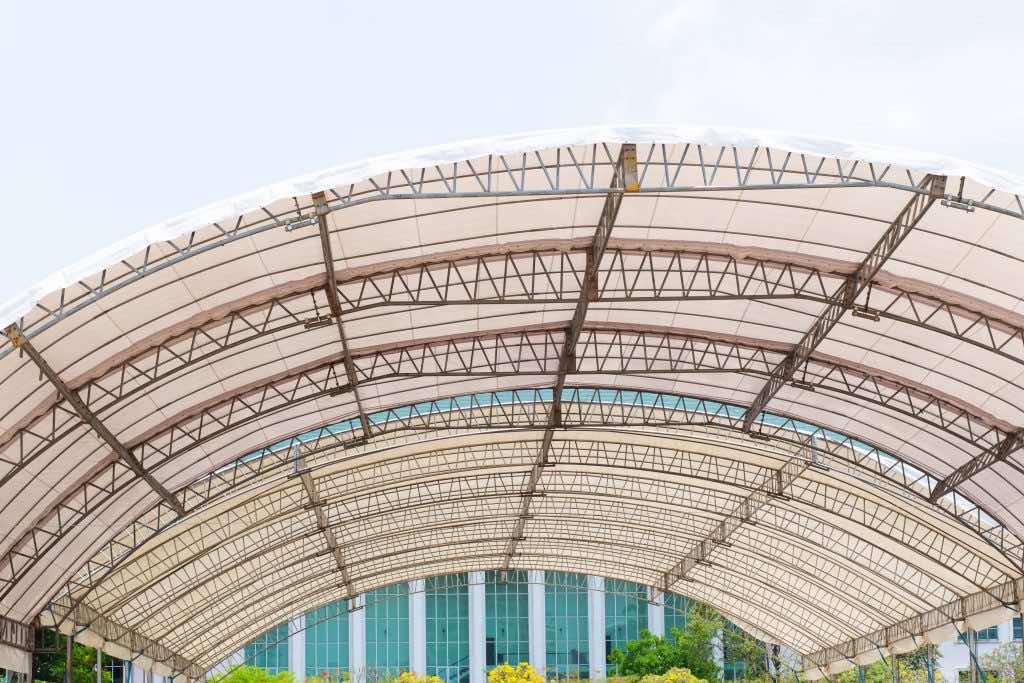Various sectors continue to advance their technologies to produce better products and services. The architectural industry isn’t one to be left behind either. Although traditionally, structures have used glass, brick, and mortar, there’s new technology starting to get noticed for fabric structures.
Initially, you could associate fabric structures with temporary use. Nowadays, however, there are durable fabric structures meant for permanent use. You may argue that the conventional brick and mortar resonates with permanence and hence more trust. This is not always the case as the fabric structures wave catches on.
Given that most construction clients may look at versatility and costs, among other factors, the pro-fabric structures camp may not need to break a sweat to win over such customers. The following are some reasons why you may find it better to opt for fabric structures over traditional ones:
- Versatility
You can easily change a fabric structure’s design to better fit your operational needs even after installation. Unlike a conventional structure that could mean taking down walls and stopping operations, a fabric structure has fewer inconveniences.
Moreover, you can customize the fabric structures to meet your requirements. For example, you can choose various colour ranges, have varying door and window sizes, and have roof styles of your choice. Coupled with the fact that they can offer the durability you need, fabric structures are an option over traditional designs.
- Energy Efficiency And Sustainability
Fabric structures allow better natural temperature due to their thermal emittance and solar reflection technology. Thus, the tensile fabric structures are warmer inside than traditional structures during the colder seasons. Therefore, it takes less energy for the heating system to achieve the proper temperatures. They are a few degrees cooler during the warmer seasons, thus less energy for the cooling system.
Likewise, the translucent nature of the fabric structures means you get more natural light inside the facilities. Thus, you use less electricity to light up the building. Given these two points, you can save costs for heating and cooling systems and cut lighting costs.
One significant point to note is that you can recycle the materials you use in a fabric structure. So, if you no longer need it, the fabric and the steel masts are easily recyclable.
- Low Maintenance Costs
The tensile fabric materials don’t need coating and repainting even during extreme weather like traditional structures. The fabric can withstand harsh weather elements like sandstorms, salty water, and snow. The ultraviolet coating also makes it resistant to the sun’s rays.
- Less Construction Time
If you’re an investor, time is money. As such, you would want your architectural structures to start earning their worth as soon as possible. There can be a significant lead time before using the building for traditional structures. This is due to the several materials and the need to dry off some of them.
An architectural fabric comes to the construction site as a sizeable pre-engineered panel. The number of these large panels would depend on the size of the structure. Therefore, it arrives at the site ready for installation, and the construction team wouldn’t need to spend time assembling it.
Additionally, the number of materials necessary to put up a fabric structure is fewer compared to conventional structures. In essence, a fabric structure can be operational within days, whereas a brick-and-mortar structure can take several months.
- Portable Fabric Structures
For a traditional brick-and-mortar structure, once the building is up, it stays in the same place permanently. If you want to move your operations to another location, you need to build afresh in a new site, which will be costly and time-consuming. It would also be challenging to often move your operations from one place to another.
Meanwhile, fabric structures consist majorly of tensile building fabric and steel or aluminium masts. These components require base plates to bolt onto for ground support. Thus, it’s easier to take down your structure and relocate, and you can use the same materials in your new location. If you want to relocate and take down conventional structures, you won’t reuse most materials.
Fabric structures can still give you the permanence you need while still allowing you the window to relocate if the need arises. Consequently, because the relocation can be less costly and quicker, they are a better option than traditional structures. Therefore, it would make financial sense to opt for a fabric structure instead.
- Maximum Usable Space
Every inch inside is crucial for large structures like aeroplane hangars, conventional centres, or warehouses. You can achieve this easily with a fabric structure without support pillars or beams inside the structure. This may not be possible with conventional structures. Hence, opting for a fabric structure would be more sensible in such a case.
Conclusion
Given the fabric structure’s versatility, portability, and energy efficiency, it has a competitive edge over traditional structure. Furthermore, its less construction time and ability to provide usage for every inch inside mean you can get value for money. Thus, with these features, fabric structure demand may continue to grow.

